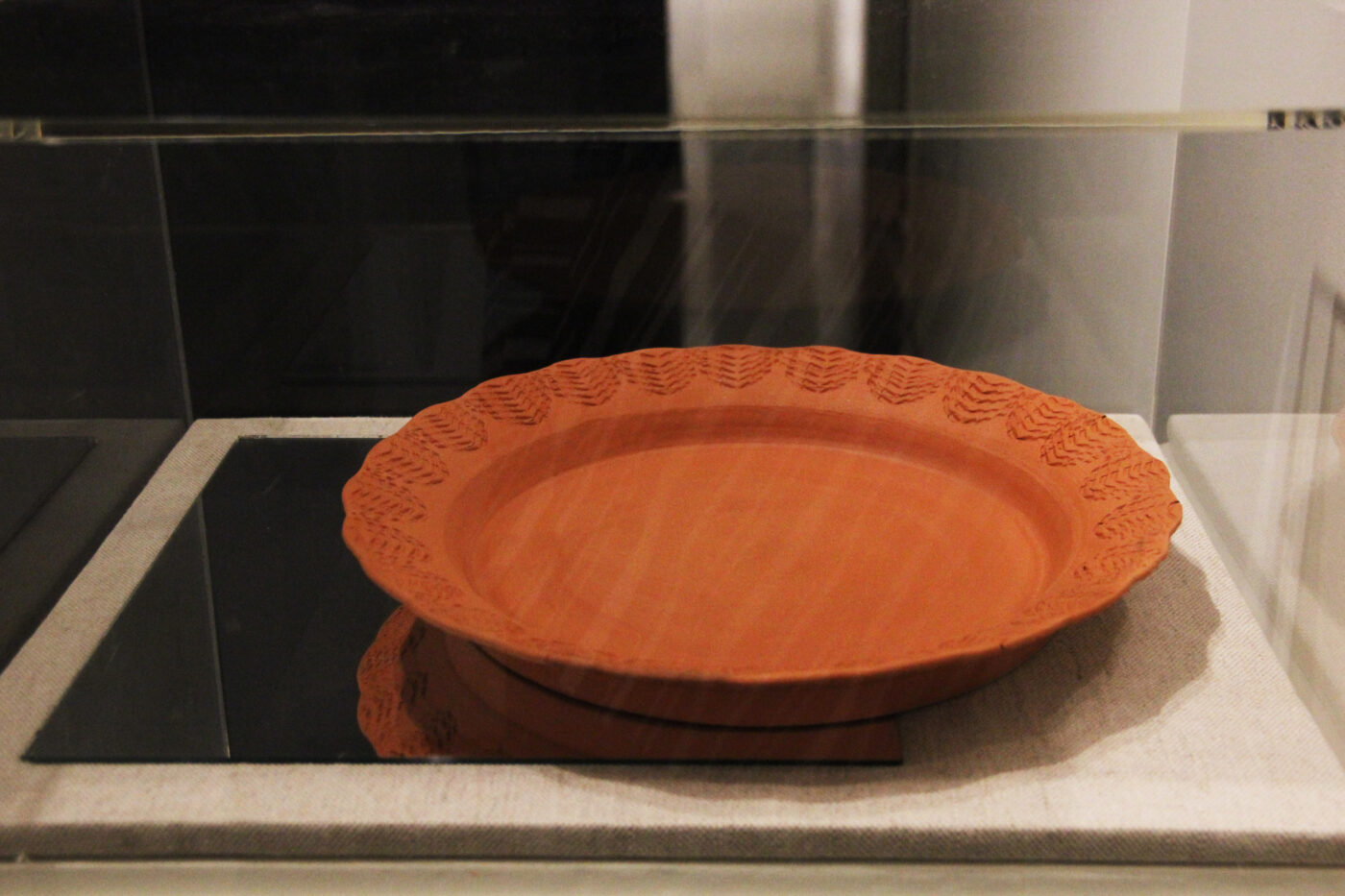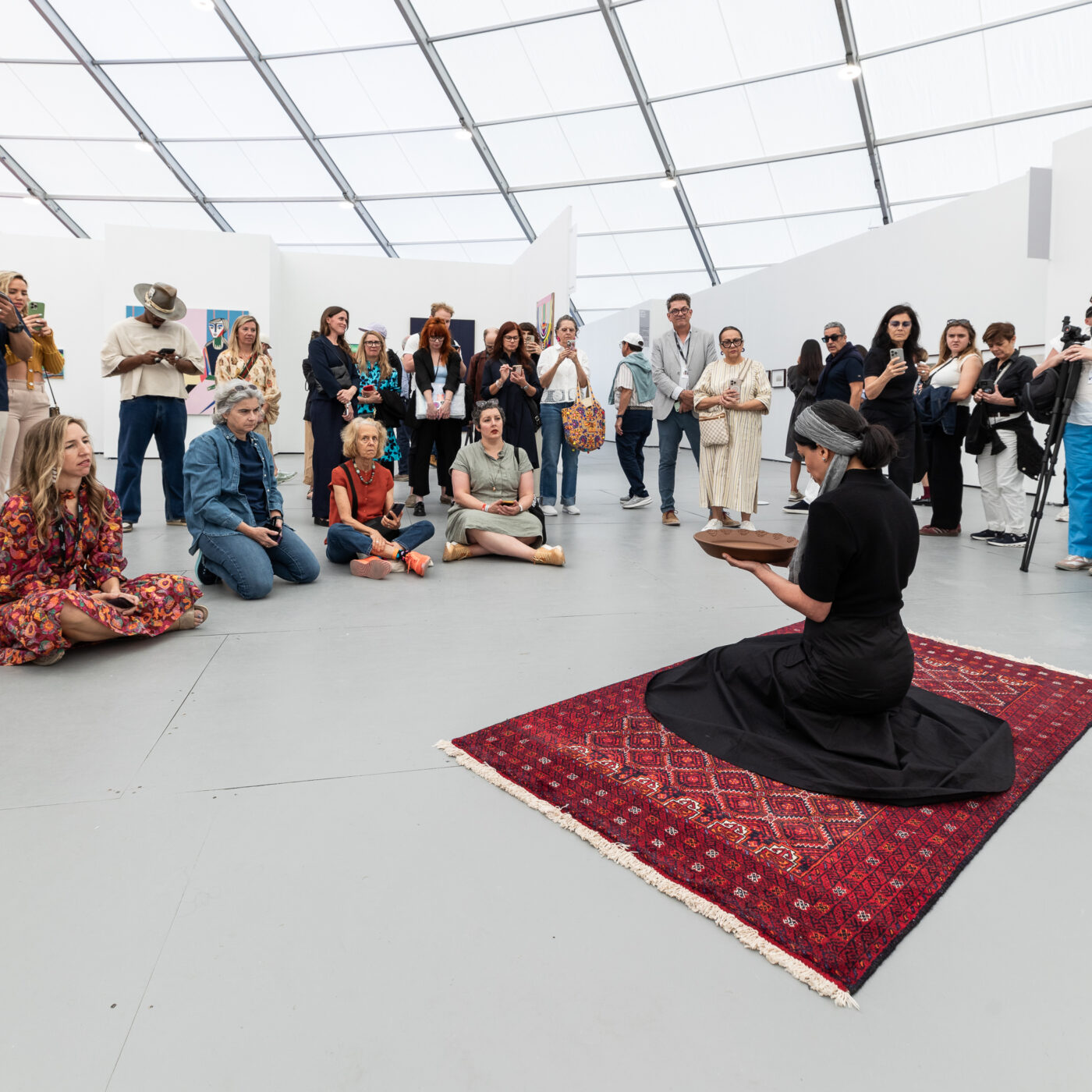

“There is nothing new under the sun, but there are new suns.” –Octavia Butler

5 minute experience, or the time it takes to steep a cup of tea.
What stories might soil tell? Itinerant artist Raheleh Filsoofi maintains a close relationship with clay throughout her work, and especially through her ongoing series BITE. In the following essay, Filsoofi expounds on BITE’s inception and how the project has shifted over time, destabilizing the notion of archives as static and enclosed through a practice of active embodiment and communal witnessing.
BY RAHELEH FILSOOFI
I began collecting soil and sound in 2016. As an immigrant navigating land that did not belong to me, I was obliged to recognize the origin of my resources and reflect on my traversals in the creation of artwork. In the first few years, I collected soil from over 175 locations in forty states from the southern border with Mexico to the northern border with Canada.
I had always considered archives as a sacred yet static space where documents and artifacts of the past were protected, where knowledge was carried and received from the past to the present, for the future. An evaluation of my own process initiated a ruminative consideration of collection and preservation and encouraged me to question that notion. Could an archive be more than a static collection stored in institutional spaces? Could it be a living entity shaped by touch, sound, and movement preserved for the future, but also for the present moment?
BITE (2020) reconceptualizes the archive as a living entity and surpasses the limitations of institutional archives by embracing fluidity, movement, and change as it happens, creating an evolving record. It creates a living record of memory in three distinct forms: solo performance, public performance, and object. Each form approaches archiving differently, yet all are connected by a common thread: BITE as an act of resilience, resistance, and remembrance.

[ID: An aerial view of a terracotta clay plate with repetitive human bite marks around the rim sits on the floor next to a vibrant red rug with similar decorative marks in the pattern and motifs.]
Using clay from places I had lived, I pressed my teeth into each plate, each place, leaving my mark. More than an action, this was an act of defiance aimed at unearthing buried histories and reimagining the colonial narratives embedded in the clay itself.
BITE began as a personal act. Using clay from places I had lived, I pressed my teeth into each plate, each place, leaving my mark. More than an action, this was an act of defiance aimed at unearthing buried histories and reimagining the colonial narratives embedded in the clay itself. As an immigrant woman and artist, I stood at the intersection of past and present. My body became a bridge for historical connection and created a personal archive, a living record.
BITE pushed forward from a solitary to a public sphere, transmuting into a communal act. In public performances, as I engaged with ceramic plates, the audience participated as witnesses in the act of mark-making. Their presence became integral to the archive. The marks were an imprint of shared moment and communal experience. Shifting from body to collective memory created new possibilities for preservation, transcending conventional and traditional collections to embrace the ephemeral nature of experience as a new approach in archiving.

[ID: A terracotta clay plate with decorative marks around the rim is sitting on a square mirror inside of a glass display podium. The marks are repetitive, sequential, and arrow-like indents.]
Creation and communal acts are as significant as physical objects manifesting as a living archive, witness to history, repository of memory, and catalyst for future narratives.
BITE’s third form follows the traditional form of archiving — the objects that remain are vessels of narrative, memory, and transformation. They affirm archiving as an ongoing process. Creation and communal acts are as significant as physical objects manifesting as a living archive, witness to history, repository of memory, and catalyst for future narratives.
While performances may be impermanent, memories of the narrative’s emotional and social impact formed during performances endure, transforming the archive into a relevant entity embedded within human experience. This archival production of sensory experiences that challenge dominant narratives fosters new understandings of preserving history.

[ID: At a gallery exhibition, a woman in a black dress and grey headscarf is kneeling on a red decorative rug. She is holding a clay plate up to her bowing head. There is an audience watching and filming her performance.]
Through BITE I came to understand that I am actively shaping the archive, thus beginning to answer my questions. I realized that as an artist I hold the responsibility for creating, documenting, and transforming the archive itself. With my body and its interaction with the medium, my work has the power to change static repositories and transcend them with dynamic, living entities.
Each performance, each mark I make, is not just an imprint of the past but an active construction of action and memory in the present. In this way, I recognize my own agency in redefining what an archive can be; it can be static, but it can also be responsive and embodied and continually unfolding. In this process, I am the narrative and become its living archive.

[ID: Raheleh, a woman with light skin and dark hair, gazes at the camera. She is wearing a headscarf and a dangling silver hamsa earring against a black background.]
Raheleh Filsoofi
She // Her // Hers
Nashville, TN
Raheleh Filsoofi, a collector of soil and sound, is an itinerant artist, feminist curator, and community advocate. Filsoofi’s work revolves around themes of movement, immigration, and social activism. Clay and sound serve as her primary expressive mediums, enabling her to create diverse narratives through multimedia installations and performances. Her art disrupts the borders that exist between us and seeks a more inclusive world, illuminating and challenging policies and politics.
She is a 2023 recipient of the Joan Mitchell Fellowship, the 2022 Winner of the 1858 Contemporary Southern Art Award, and the recipient of the 2021 South Arts State Fellowship for Tennessee. She is an Assistant Professor of Ceramics in the Department of Art at Vanderbilt University and holds a secondary appointment at the Blair School of Music. Filsoofi received her MFA in Fine Arts from Florida Atlantic University and her BFA in Ceramics from Al-Zahra University in Tehran, Iran.
rahelehfilsoofi.com
Instagram: @rahafilsoofi
